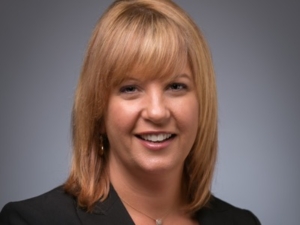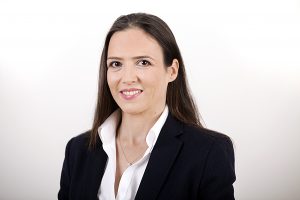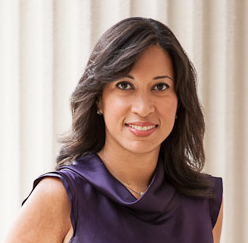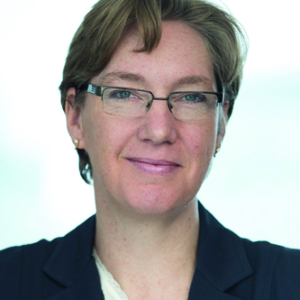When it comes to possessing successful leadership behaviors, C-Suite females rate themselves virtually the same as male executives. But having what it takes to be a leader and being perceived equally as one are different things.
In a recent INSEAD article, Dr. Caroline Rook shared that an investigation of 1,167 female and male C-suite executives revealed “no meaningful differences between the way men and women rate themselves on twelve leadership behaviors attributed to successful global leaders.” In fact, Rook found that in some industries women were more likely to self-rate rate higher than men did on emotional intelligence and team-building.
An Elusive Bridge Between Ability and Success
Experts may advise on how to cultivate it or even be aware of what detracts from it, but executive presence remains elusive. Fast Company has called it “the intangible career trait that you need to succeed.” It’s easier to recognize than describe. It’s been approximated with the words “gravitas”, “charisma”, and the ability to “command a room.” It’s also been called the “workplace X factor”. Executive presence seems to be a Gestalt mosaic of qualities exuded by select leaders which, subjectively perceived, makes their whole greater than the sum of their parts.
Silvia Ann Hewlett, Ph.D., author of Executive Presence: The Missing Link Between Merit and Success, told Fast Company that executive presence is “a measure of image – a dynamic mix of gravitas, communication, and appearance.” According to Hewlett and many other experts in this space, executive presence is the bridge you build between your abilities and advancing – because merit alone is unlikely to get you there.
“Executive Presence” Brings Men to Mind
In their study, “Understanding Executive Presence: Perspectives of Business Professionals”, researchers Gavin Dagley and Caderyn Gaskin explored executive presence through in-depth interviews with 34 Australian business professionals with expertise in the effectiveness of organizational executives.
The researchers concluded that “a person with executive presence is someone who, by virtue of how he or she is perceived by audience members at any given point in time, exerts influence beyond that conferred through formal authority.”
Because executive presence is easier to perceive than describe, the researchers began with asking the participants to nominate four people who they thought of as having executive presence, and from that point they explored what executive presence was.
71% of participants brought up and described male examples, women doing so (75%) even more than men (65%). None only brought up female examples. Some participants realized during the interview they were speaking only about men, and self-corrected to include women, but their initial inclination was already clear.
Are the Characteristics of Executive Presence impossibly male?
The researchers found that executive presence is to some extent in the eye of the beholder. One person may perceive an executive to have substantial presence, while others may be less impressed.
They also found that executive presence is not entirely impression-based, something a leader exudes from the first impression. Rather they found that sustained perceptions of executive presence were a sum of initial contacts and evaluations over an extended time of more exposure.
Of the ten characteristics of executive presence they identified, five were based on impressions during brief contacts which we would argue are heavily gendered making it tricky for women to be measured with the same yardstick since historical notions of status are just so, well, male?
- Status and Reputation – an “initial aura of presence” based upon strong reputation, impressive networks, senior roles held, and significant achievements – “reputation” is the key word
- Physical Appearance – appearance (“looking the part”), stature, and non-verbal body language such as posture, eye contact, and walk
- Projected Confidence – displaying outward calmness, composure, and a sense of self, emotional intelligence, dignity, elegance, style, a “sense of authority” or charisma
- Communication Ability – ability to communicate messages simply, clearly, convincingly and appealingly; effective use of voice; ability to make themselves heard
- Engagement Skills – ease and manner in which executives engaged with others, with skills such as “eagerness”, “charm”, “apparent sincerity”, “quiet wit”, and “friendliness”
- The other five characteristics were more evaluation-based and built over time and exposure and are more gender neutral, based more in substance and integrity than status and style. They included, for example:
- Interpersonal integrity – acknowledging others contributions, “being inclusive”, remembering the last conversation with someone, showing the “human touch”, relationship-based interpersonal sincerity
- Values-In-Action – acting in accordance with personal values, showing integrity –being “genuine”, “authentic to her values,” “courageous – speaks from the heart,” “tough-minded,” “authentic with follow through,” and “trustworthy”
- Intelligence and Expertise – quality task-focused thinking, observed as “impressive intellect,” “knowledge in areas of focus,”“considered when expressing views,”“long-term insightful thinker,” “excellent judgment,” and “quiet wisdom”
- Outcome Delivery Ability – ability to deliver key outcomes, including solid decision-making, commitment, being flexible, being energetic and hard-working, and achieving delivery through others
- In many ways, these characteristics are more important to leadership than the impression-based, gender-biased measurements that have become attached to executive presence short-hand.
Gender and “Executive Presence”
Dagley and Gaskin found that “executive presence is located in the perceptions of audience members rather than being something inherent in the executive.” Executive presence might be the bridge to the executive office, but it’s also subjectively defined by who is present in it.
The research shows how women can more broadly build the bridge of their executive presence, how you can recognize existing strengths and fill in your own personal gaps. But how executive presence interacts with gender is embodied in the word. The most likely reason “executive presence” brings men to mind first is that men are over-represented in the corporate executive suite.
When will “executive presence” bring women right to mind?
When women have equal presence in executive roles.
That’s a bridge that requires collective organizational and cultural building.
By Aimee Hansen










